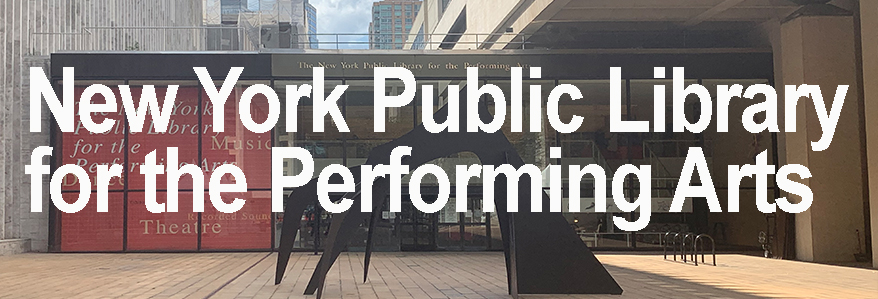Date: 1958-1965
Architect: Skidmore, Owings & Merrill
Primary Style: Modernist
Façade (primary material): Travertine Marble
Stories: 5
(The New York Public Library for the Performing Arts and Vivian Beaumont Theater share the same building.)
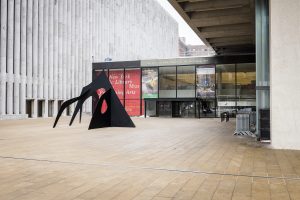
Image Courtesy Billie Grace Ward, via Flickr
Lincoln Center Performing Arts Library and Museum
History –
- Lincoln Center Performing Arts Library and Museum was designed in conjunction with Vivian Beaumont Theater by Gordon Bunshaft of Skidmore, Owings, and Merrill and completed in 1965.
- Eero Saarinen & Associates designed Vivian Beaumont Theater.
- Although originally intended to be separate buildings, the two architects collaborated to create a more successful design for both purposes in one building than either could compose individually.
- While a design that caused a small degree of infighting between the architects was scrapped in 1960, their relationship, unlike those of other Lincoln Center architects, was marked by a peaceful sense of understanding.
- In 1998, a renovation of the Lincoln Center Performing Arts Library and Museum was begun. Completed in 2001, this project was made possible through a $38 million donation by Dorothy and Lewis B. Cullman, the now namesakes of the building.
Original Design –
Eero Saarinen’s Vivian Beaumont Theater and Gordon Bunshaft’s Lincoln Center Performing Arts Library and Museum, though separate spaces on the interior, were designed as a cohesive and flowing unification of two very similar exterior structures. While Saarinen produced the working drawings for the building, Bunshaft’s influence was also evident. Sadly, Saarinen died in 1961, so he was unable to see the completed building in 1965, however, his influence upon the design through Bunhsaft’s execution is unmistakable.
The theater and library and museum combination does not front on the main Lincoln Center Plaza, its site, located north of the Metropolitan Opera House and far west of the Philharmonic Hall, fronts on Lincoln Center Plaza North, which was also designed by Saarinen and Bunshaft and is located between Vivian Beaumont Theater and Philharmonic Hall. Additionally, a foot bridge introduced in 1969, crossing Sixty-fifth Street to the Julliard School, is accessed near the northern façade of the building. Lincoln Center Plaza North, less austere than its large southern neighbor, Lincoln Center Plaza, is lined with trees along the southern edge, or the north wall of the Metropolitan Opera House. These trees, lit from below at night, give the space a pleasant intimacy. At its center is a 120-foot by 80-foot reflecting pool and resting in this pool is Henry Moore’s Reclining Figure statue. This lounging female figure, at sixteen feet tall, is based upon the pre-Columbian goddess Chacmool. This sculpture was near-unanimously well-received, as the woman seemed to be taking a relaxing bath, further compounding the amity and warmth of the space. Additionally, an Alexander Calder sculpture populates the plaza near the entry to the library and museum. The sculpture, composed of a series of spindly steel plates, resembles a spider to most. However, the piece is titled Le Guichet, meaning ‘ticket window’ in French. This title is representative of the small opening cut in one of the “spider’s legs.” A ticket window is much more thematically linked to Lincoln Center for the Performing Arts. While this sculpture was initially poorly received, its home within the plaza is fitting and its placement compliments this public space. Overall, Lincoln Center Plaza North was praised for incorporating a refreshingly contemporary format, distinctly reflective of twentieth century design principals.
The Lincoln Center Performing Arts Library and Museum meanders around the larger body of Vivian Beaumont Theater. Its entry fronts on Lincoln Center Plaza North, while the remainder of the building wraps behind the theater, fronting on Amsterdam Avenue between Sixty-fourth and Sixty-fifth Streets with a secondary entrance, and over the theater’s roof, forming a ring around the theater’s stagehouse. The eastern entry façade, a two-story glass and steel framed design, discretely slips between the Metropolitan Opera House and Vivian Beaumont Theater. Like the related theater, the library and museum’s design is stark and restrained and based entirely in International Style modernism. However, it can be argued that the crammed and crowded entry’s placement and orientation creates a cluttered nature that is inconsistent with the International Style.
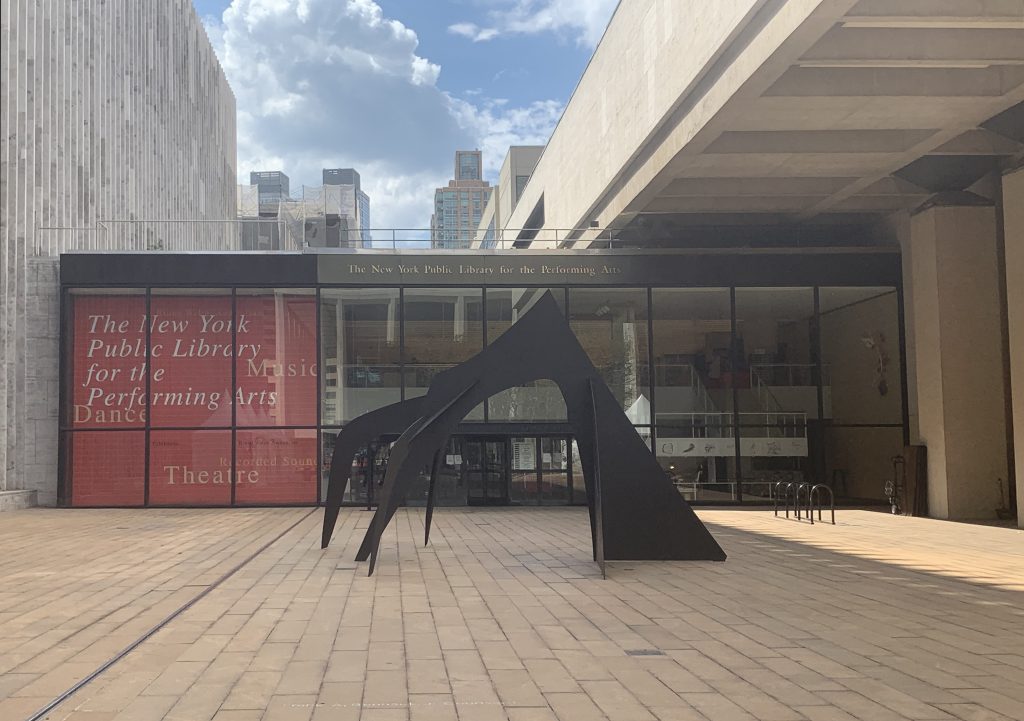
The building’s interior is entirely separate from that of Vivian Beaumont Theater, despite their cohesive appearance from the outside. Upon entering the library and museum from Lincoln Center Plaza North, the functional nature of the building is evident. This was Gordon Bunshaft’s intention. Through quality and simple design, he was able to create a consolidated center for arts information for the city of New York, a feat for which Bunshaft was near-universally praised. Notably, at the entry level from the plaza, the space is defined by a stunning, eighty-foot-long travertine circulation desk and a children’s library which includes a small, oval-shaped theater. The mezzanine level is defined by its continuation of Vivian Beaumont Theater’s coffered, exposed-concrete ceiling, linking the two spaces, and its glass walls on the western and northern façades. Gordon Bunshaft’s minimal design for the Lincoln Center Performing Arts Library and Museum, inside and out, is commended for its functional simplicity as a fantastic educational resource for all New Yorkers.
Past Renovations –
- In 1998, Dorothy and Lewis B. Cullman, long-time trustees of Lincoln Center, pledged $38 million toward the renovation of the Lincoln Center Performing Arts Library and Museum. The renovation targeted a technological upgrade for the library, providing the building with computers on each floor and instilling an electronic cataloguing system. Additionally, the library’s individualized reading rooms for specific research divisions were consolidated into a single reading room with a more open concept. With this, the space for housing the library and museum’s special collections and screening room were left separate but also renovated. The gallery space for the museum was also consolidated into two galleries at the Lincoln Center Plaza North entrance and the Amsterdam Avenue entrance. While the renovation’s technological upgrades were necessary to the function of the library, the alterations to the interior spaces seemed without purpose and were criticized for removing the sense of intimacy that once defined the library.
Further Reading –
- Stern, Robert A. M., et al. New York 1960: Architecture and Urbanism between the Second World War and the Bicentennial. Taschen, 1997.
- “New York Public Library for the Performing Arts.” Wikipedia, Wikimedia Foundation, 22 Apr. 2020, en.wikipedia.org/wiki/New_York_Public_Library_for_the_Performing_Arts#2001_renovati on.
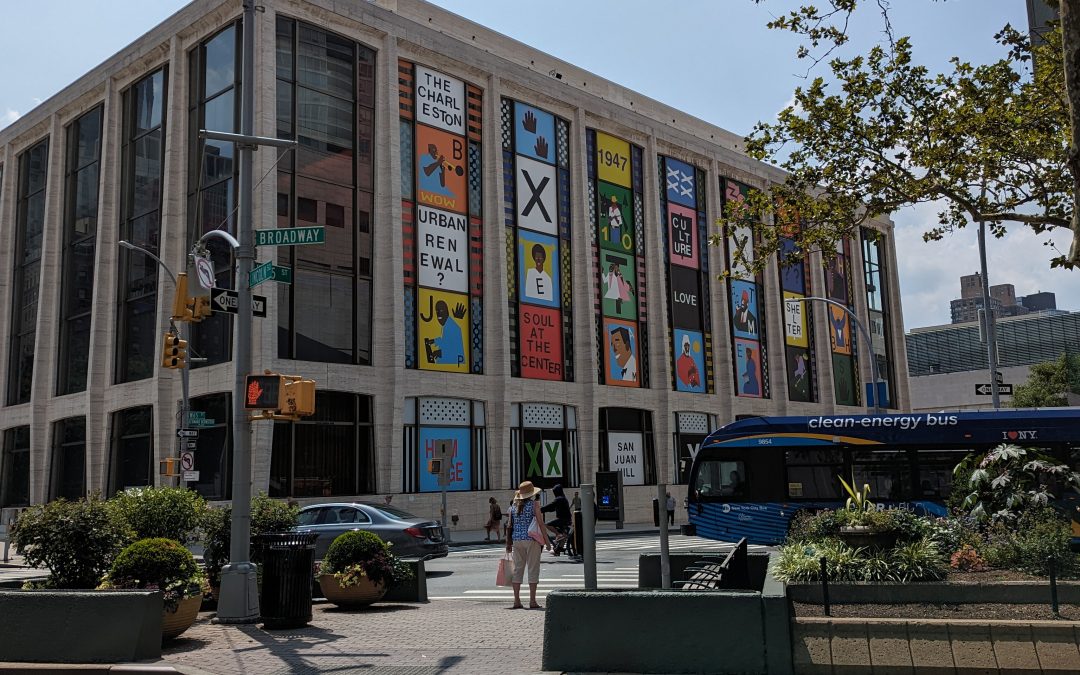
“San Juan Heal” Stands Out at Lincoln Center
by Sarah McCully It’s hard to miss the bright colors dotting David Geffen Hall’s typically neutral facade. Since early October of last year, the newly renovated concert hall’s northern windows have played host to a temporary art installation called “San Juan Heal” by...

Clouds de-Parting
Public art installations seem to be on attack, not just at Lincoln Center, but also, throughout the rest of New York City. The Museum of Modern Art (MoMA) has, for a long time, acted as a steward of Isamu Noguchi’s sculpture and other artwork. However, across the...
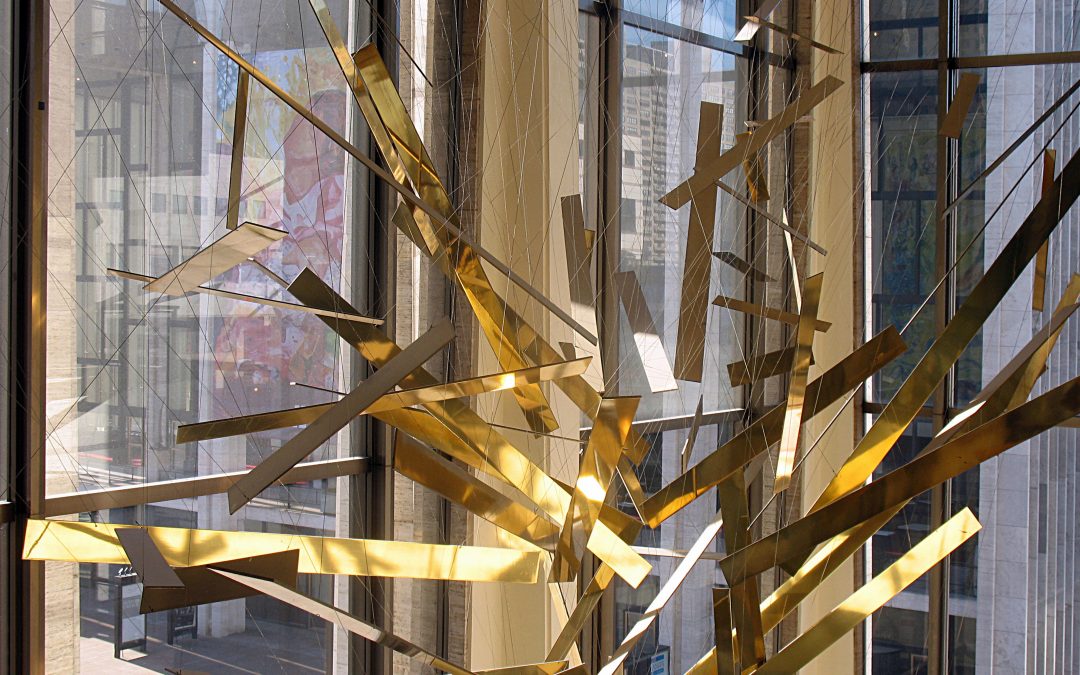
Seven to Save – UWS Gets Brassy with the PLNYS for the Richard Lippold Installation at Lincoln Center
Lincoln Center for the Performing Arts' Philharmonic Hall has felt empty since 2014, when Orpheus and Apollo, the shimmering and abstracted construction that has hung from the ceiling of the "grande promenade" since the hall was opened in 1962, was removed for...

Inside the Music Box
After some curveballs which were scrapped, The New York Philharmonic Hall, Avery Fischer Hall, David Geffen Hall at Lincoln Center is again in the news, and this time, it truly is what's on the inside that matters. Lincoln Center has announced that New York's own Tod...

